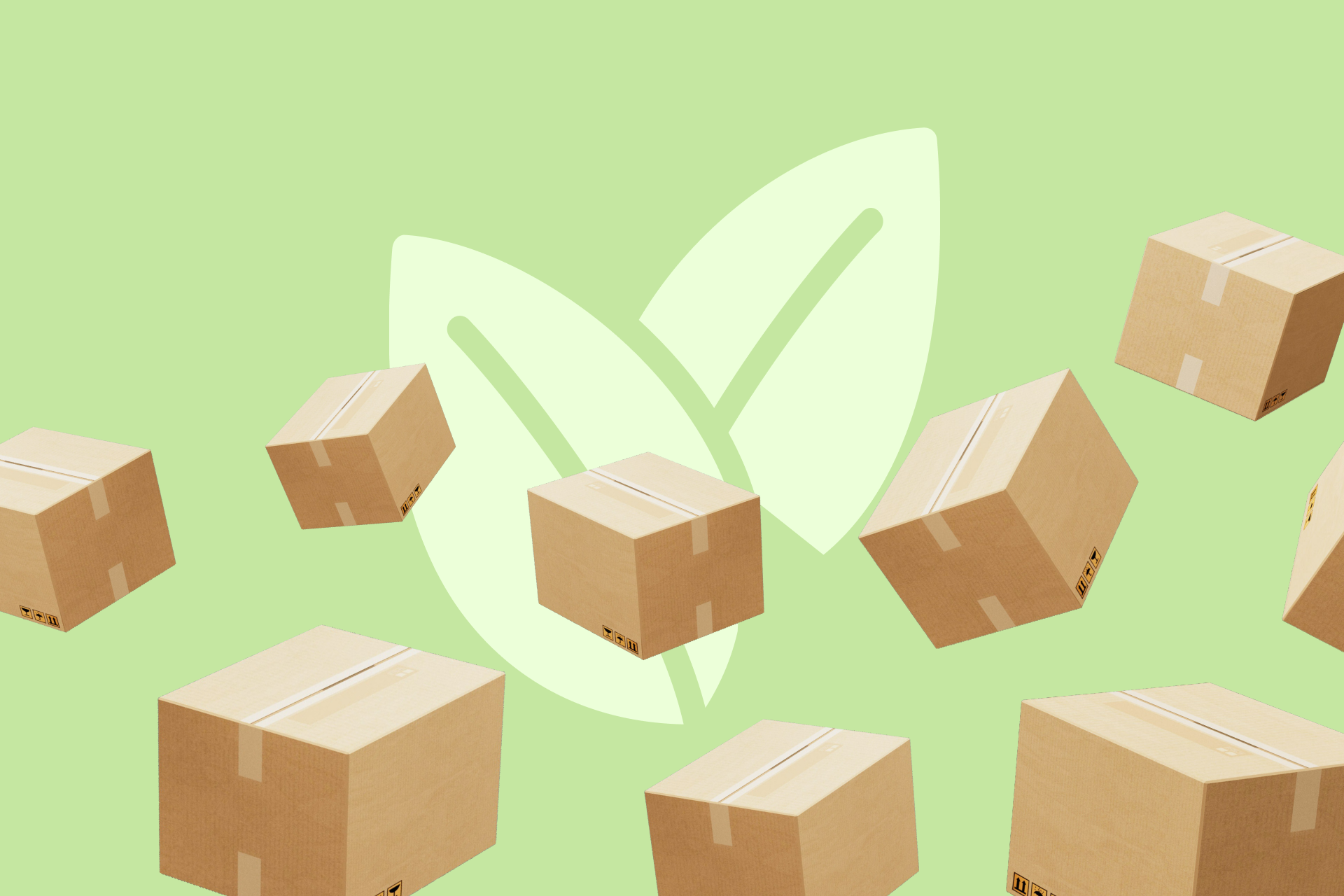


Over the past few years, and especially since the pandemic hit, you will have been faced with many challenges if you’re trying to build a sustainable delivery service.
Yuval Tori, our Chief Commercial Officer likens it to a ‘Gordian knot’, i.e., a problem solvable only by bold action.
“The growth of e-commerce is forcing retailers to diversify their fleet even further and call upon more external carriers, thus potentially turning their delivery operations into a Gordian knot.”
Indeed, research from the World Economic Forum (WEF) predicts that between now and 2030, demand for urban last mile delivery driven by e-commerce growth will nearly double. In the near future, revenues from e-commerce across Europe are expected to rise by as much as 30% in 2021 alone.
But the picture isn’t all rosy as with this growth also comes an increased carbon footprint. The WEF forecasts that, as a result of increased demand, there will be 36% more delivery vehicles on the roads in the world’s largest 100 cities in the next ten years, leading to increased emissions and a 30% rise in the last mile carbon footprint.
At the same time, however, pressure is growing daily on retailers and delivery companies to ‘go green’ and decrease their carbon footprints.
We’ll consider:
-
Why is a sustainable delivery service so important?
-
Challenges creating a sustainable delivery service
-
Quick ways to create a more sustainable delivery service
Why is a sustainable delivery service so important?
There are 3 main reasons for this increased pressure on retailers and delivery companies.
1 – Government and EU legislation.
In 2020, the UK government published a report called ‘Decarbonising Transport: Setting the Challenge’. It outlined how important goods movement is to the UK economy but also noted that since 1990 van traffic on the roads has increased by 104% – with much of this change being attributed to service vehicles and ‘last mile’ delivery services.
(Source)
The impact on Greenhouse Gas (GHG) emissions has not gone unnoticed either, as the graph below shows.
Actual and projected UK van emissions data, 1990-2050
Since this report, the UK government has not only set targets to reduce emissions, but has actually enshrined in law a new target to cut emissions by 78% by 2035. The effects of this law are now being acutely felt by retailers and delivery companies across the country.
The EU is no different – they’re currently battling with a proposal to add shipping to the carbon trading market, something that will add pressure on an industry that had thus far avoided the EU’s system of pollution charges, designed to enforce greener commercial behaviors.
Find out about the biggest challenges and opportunities for retailers and 3PLs in the last mile with our new State of the Industry report for 2021-22
2 – Changing consumer demands.
In September of this year, we released a report looking into the State of the Last Mile Logistics industry and the impact that changing consumer demands were having.
In 2020, the volume of parcels delivered to homes across the EU and Great Britain exceeded 10 billion for the first time. Last Mile Experts expect this to reach 20 billion in less than five years and 40 billion by 2029.
As this demand for rapid and low-cost delivery operations continues to rise, last mile logistics become much more complicated. In the past, a retailer that might have had one or two distribution centers now requires at least five. And for next-day delivery, this number increases to as many as 40.
But at the same time as demand for deliveries is increasing, demand for sustainable business models is also on the up.
An IBM Research Insights report from 2020 showed that 57% of consumers are willing to change their e-commerce purchasing habits to help reduce their environmental impact.
What’s more, consumers are increasingly embracing social causes, seeking out products and brands that align with their values. According to this same report, nearly 8 in 10 respondents indicated sustainability as important for them. And for those who say it is very/extremely important, over 70% would pay a premium of 35%, on average, for brands that are sustainable and environmentally responsible.
3 – Businesses getting in on the act.
Pressure is growing even within industry, as more businesses respond to government legislation and changing consumer habits. Nowhere is this more noticeable than with ‘B Corps’ businesses, i.e. businesses that meet the highest standards of verified social and environmental performance, public transparency, and legal accountability to balance profit and purpose. Until recently, most of the 3,422 companies – across 71 countries – that have become a B Corp have been small and medium-sized. However, a growing number of larger corporations are beginning to undergo the certification process as well. In the UK specifically, you only need to take a look at the number of businesses listed publicly as B Corps to see the interest it’s drawing.
Creating a sustainable delivery service takes time
It’s all very well setting targets to reduce emissions, but creating a sustainable delivery service takes time.
Reorganising fulfilment centres, for example, takes time and money. Opening micro-fulfilment centres is something that a number of delivery companies are already doing, creating delivery hubs closer to end destinations. Shipping companies are also finding creative ways to source new storage space without having to invest in more square footage.
Further reading: Last Mile Logistics in 2021
And then there are electric vehicles. Global multinational organisations such as DHL and IKEA have already made pledges to go carbon neutral by 2050 and electrify their home delivery fleet to support this. The EU and UK governments are more broadly making moves to ban new sales of petrol-burning vehicles within the next 10-15 years and invest in the required infrastructure to support mass adoption of electric vehicles. All very admirable, but these things require huge capital expenditure, and are extremely expensive upfront.
Quick ways to create a more sustainable delivery service
Companies across the globe are asking themselves – what quick wins can we implement to start creating a more sustainable delivery service? Surely there are measures we can take that don’t cost the earth and require decades’ worth of time and effort.
We’ve compiled the top 5 ways retailers and delivery companies can create a more sustainable delivery service.
1 – Green timeslots
Green timeslots are a great way to encourage customers to book a more eco-friendly timeslot for their delivery. A number of factors contribute to a timeslot being ‘eco-friendly’ but the biggest one is simply if a delivery vehicle will already be in the neighbourhood at that time.
Green timeslots lead to a higher drop density, i.e. less driving time between deliveries. But this isn’t just the holy grail for delivery optimisation, it’s also something that consumers actively choose. According to research by Rotterdam School of Management, more than 4 in 5 consumers would prefer a greener delivery slot if it was available to them at checkout.
Learn more about our sustainability offering
2 – Driver training
One of the quickest ways to create a more sustainable delivery service is to implement driver training that includes tips and advice on how to drive sustainably and conserve fuel.
It may not sound sexy, but it’s a proven technique to achieve fast results. In fact, one study carried out back in 2018 showed that the general savings in fuel consumption due to the application of ‘eco-driving’ was up to 6.3%, regardless of fuel type and road type.
And you don’t have to go too far to learn about ‘eco-driving’. This guide from the UK Government site is a great place to start
3 – Dark stores
‘Dark stores’ are just one of the creative ways that shipping companies are using to source new storage space. A ‘dark store’ is simply a retail outlet or distribution centre that caters exclusively for online shopping and their use has been silently increasing in recent years.
In fact, according to a report from OneStock, more than two thirds (67%) of consumers used dark store retail formats during the pandemic – predominantly for click-and-collect or home delivery of online orders. Now obviously this was because a lot of high-street stores were closed during this time, but demand for this type of store is expected to remain high.
As the report also shows, 84% of UK consumers want to continue using dark stores post-pandemic, with demand rising to 91% for 25 – 44 year olds. This is good news for delivery companies too as dark stores help reduce failed delivery attempts and improve drop density.
4 – Rethinking your packing
It goes without saying that a large part of any delivery service includes the packing. And since inefficient packing means more vehicles out on the road, looking for packing efficiencies is a critical aspect of last-mile sustainability.
Currently, smart goods companies are finding ways to optimise packaging dimensions, subsequently reducing the number of pallets used. This allows them to fit more products on each vehicle, and lowers the total number of vehicles on the road.
According to Tara Milburn, founder and CEO of Ethical Swag, a Certified B Corp company located in Novia Scotia, Canada, teams can further improve sustainability by considering how the final container is packaged for transit. This includes making sure the box is no larger than needed and that you’ve opted for sustainable packaging.
On this note about sustainable packaging, it’s worth adding that the amount of cardboard and plastic trash that home deliveries generate is staggering. For example, in 2019 alone Amazon created 465 million pounds of plastic packaging waste, according to a report from Oceana, a nonprofit organisation. The report also found, however, that 87% of customers wanted Amazon and other retail giants to take major steps to reduce plastic packaging. Clearly, demand is there for prioritising sustainable packaging options.
5 – 3PLs or third-party logistics
Another quick way to create a more sustainable delivery service is to use third-party logistic companies that already have greener fleets in place. Leveraging 3PLs makes sense for those companies looking to grow their capacity to deliver while, at the same time, decreasing their costs. What’s more, third-party logistics providers deliver considerable key benefits:
- Access to flexible delivery capacity
- Usage of greener vehicles without any capital outlay
- Instant access to specialist delivery services, such as big and bulky deliveries by trained installers
- Consolidation of deliveries
- Increased geographical coverage
- Reduced fixed costs
- Improved service levels and flexibility
The reason 3PLs are able to offer such an optimised service is largely down to their use of last mile delivery platforms. These platforms use algorithms to allocate deliveries across carriers, drivers and even entire fleets and they are a great way to maximise your drop density at the same time as operating your delivery service efficiently.
The algorithms have now been in play for a number of years and can optimise based on a complex set of requirements. One such requirement or factor is location-based mapping that can decide if a bike courier can cut through a park for a quicker journey or an electric vehicle can take advantage of a low emission zone that other vehicles might not be able to access.
In closing…
For retail and delivery services companies looking to stay ahead of consumer trends and demands, the world of last-mile delivery optimisation can seem like a minefield. Add in ever-changing government regulations and drives to cut emissions, and the minefield becomes a battlefield! There is help at hand though in the form of both short- and long-term tactics to create a more sustainable delivery service, ones that will not only position your service ‘for the greener good’ but will also position your brand as one that customers will want to actively use time and again – and that, of course, means great news for your bottom line.












